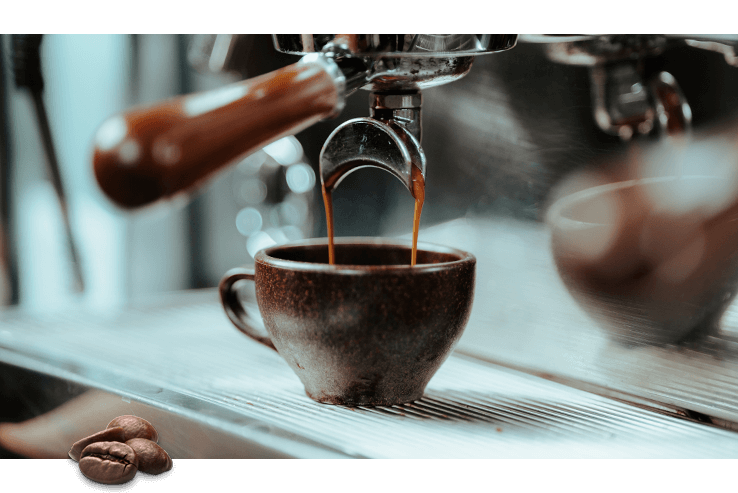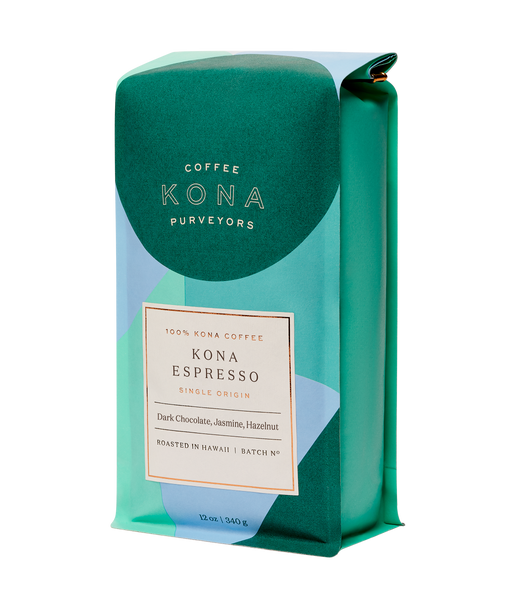The New Wave of Choosing SOE Single Origin Espresso at Home
Wiki Article
Checking Out the Abundant Flavors of Coffee Beans: a Deep Study Espresso and Blended Coffee Beans
When you check out the rich tastes of coffee beans, you discover a complex globe where each range brings its very own character to your mug. As you navigate via the art of espresso and the creative thinking behind combined coffees, you'll start to value the nuances that make each sip one-of-a-kind.The Origins of Coffee Beans: Checking Out Terroir and Taste Profiles
When you take a sip of coffee, you're not simply delighting in a drink; you're experiencing a rich tapestry of flavors formed by the beans' beginnings. Each area generates distinct taste profiles affected by elevation, climate, and soil. For example, beans from Ethiopia frequently break with bright, fruity notes, while those from Colombia tend to supply a well balanced, nutty sweetness.As you discover different beginnings, you'll notice exactly how terroir-- the environmental elements influencing a crop-- plays a crucial function - Single Origin Espresso. The exact same coffee variety can taste dramatically various depending upon where it's expanded
When you consider these aspects, you begin to value the intricacy behind your cup. Each sip narrates of the land and the farmers who supported the beans. So, next time you indulge, consider the trip your coffee took before it reached your hands, and enjoy those detailed tastes that show its origin.
Recognizing Coffee: The Art and Scientific Research Behind the Mixture
When you assume about coffee, it's not almost the strong flavor; it's also concerning the techniques that bring it to life. Understanding exactly how different prep work approaches effect preference can transform your developing experience. Let's discover the details of espresso prep work and reveal the unique taste profiles that make each mug unique.Espresso Prep Work Methods
Coffee preparation is both an art and a scientific research, combining accurate methods with a deep understanding of coffee. To begin, you'll intend to choose premium, newly baked beans and grind them finely for perfect removal (Single Origin Espresso). The grind size is essential; as well coarse, and your coffee will certainly be weak, as well fine, and it'll be bitterNext, tamp the grounds uniformly in the portafilter to assure consistent extraction. When you lock it into the maker, go for a brewing temperature level in between 190 ° F and 205 ° F.As you draw the shot, expect the best extraction time-- around 25-30 seconds. The result should be a rich, creamy coffee with a stunning layer of crema on the top. With practice, you'll understand these techniques.
Taste Profiles Clarified
The globe of espresso uses an abundant tapestry of flavor profiles that can boost your coffee experience. Light roasts commonly display intense level of acidity and vibrant flavors, while dark roasts present much deeper, bolder tones.A well-crafted mix might harmonize the intense notes of an Ethiopian bean with the rich, chocolatey touches of a Brazilian bean. Embrace the trip of finding espresso's diverse flavors, and you'll change your coffee routine into an amazing journey.
Processing Methods: Exactly How They Influence Flavor and Scent
While it could seem that the beginning of coffee beans is one of the most considerable consider determining their taste and fragrance, the processing approaches utilized post-harvest play a just as vital duty. You'll locate that these approaches can considerably alter the last preference profile of your cup.For circumstances, the washed procedure removes the fruit from the beans prior to fermentation, typically causing a cleaner, brighter flavor. The natural procedure leaves the fruit undamaged during drying out, resulting in a sweeter, fruitier profile.
Various other methods, like honey handling, strike a balance, enabling some fruit mucilage to stay, giving an one-of-a-kind complexity.
Each processing technique communicates with the beans' intrinsic attributes, improving or muting certain tastes and scents. When you drink that espresso or combined coffee, remember that the journey from cherry to cup is affected not simply by origin yet additionally by how those beans were processed.
Roasting Strategies: Opening the Complete Potential of Coffee Beans
Roasting techniques are important for revealing the full capacity of coffee beans, as they transform raw, eco-friendly beans into the fragrant, tasty coffee you delight in. The selection of toasting approach-- light, tool, or dark-- substantially influences taste profiles. Light roasts preserve the beans' natural level of acidity and fruity notes, while tool roasts equilibrium sweetness and richness. Dark roasts, on the various other hand, stress strong, smoky tastes.A slower roast at reduced temperature levels enables for intricate flavors to establish, while a quicker roast can escalate resentment. By understanding these techniques, you'll disclose a world of taste, raising your coffee experience to brand-new heights.
The Magic of Blended Coffee: Producing Unique Taste Experiences
Creating a special taste experience with mixed coffee can change your early morning ritual right into an expedition of preference. By incorporating different beans from different regions, you can reveal a harmony of flavors that elevate your cup to brand-new elevations. Each mix offers an unique account, balancing body, sweetness, and level right here of acidity to create something absolutely unique.When you select a mix, you're not just picking a coffee; you're choosing a trip across varied landscapes and societies. Exploring with various combinations enables you to uncover your personal faves, whether you enjoy fruity notes or abundant, chocolatey touches.

Tasting Notes: Identifying the Subtleties in Your Cup
As you sip your coffee, you may notice a spectrum of tastes dancing on your taste, each revealing the ins and outs of the beans. You might taste the bright acidity evocative citrus or the deep, rich notes similar to dark delicious chocolate. The sweet taste can evoke honey or sugar, stabilizing the total profile wonderfully.Focus on the body of the coffee-- does it really feel airy and light, or is it complete and creamy? The surface, also, supplies hints; a sticking around aftertaste may mean nuttiness or floral touches.

Don't fail to remember to discover the distinct features of different origins, as each area presents distinct flavors - Single Origin Espresso. For example, Ethiopian coffees typically existing fruity notes, while Colombian beans could display a more spherical sweet taste. By recognizing these nuances, you'll deepen your appreciation for each and every cup, elevating your coffee experience to brand-new elevations

Developing Techniques: Taking Full Advantage Of Flavor Extraction for every single Bean
When you discover the different brewing methods, you'll uncover that each strategy can substantially impact the flavor profile of your coffee. From French press to pour-over, each method essences different compounds, improving or muting particular notes. For example, utilizing a French press allows oils to remain in the brew, creating a richer taste, while pour-over stresses clearness and illumination.Temperature level and grind size likewise play vital duties. A coarser grind functions best for cold brews, while a great grind is suitable for espresso. Trying out water temperature-- in between 195 ° F and 205 ° F-- can expose surprise flavors, also.
Don't ignore soaking time; a fast extraction can cause sour his comment is here notes, while over-extraction may yield resentment. By readjusting these variables, you can maximize flavor extraction and genuinely boost your coffee experience. Delight in the journey of finding what approach best suits your taste buds!
Regularly Asked Inquiries
What Is the Ideal Water Temperature for Developing Coffee?
The ideal water temperature for brewing coffee's in between 195 ° F and 205 ° F. If you use water that's too hot, you'll over-extract tastes; too chilly, and you will not draw out sufficient. Objective for that pleasant area for the very best mixture!Exactly How Does Grind Size Impact Coffee Flavor?
Work dimension considerably impacts coffee flavor. Finer grinds remove extra flavors and oils, causing a bolder preference, while coarser grinds yield a lighter taste. Adjusting grind size assists you attain your wanted coffee profile.Exist Health Advantages Associated With Alcohol Consumption Coffee?

What Is the Difference Between Arabica and Robusta Beans?
Arabica beans are smoother and sweeter, typically featuring fruity flavors, while robusta beans are stronger with a bitter preference and greater caffeine material. You'll observe these differences in aroma and brewing experience.Exactly How Can I Shop Coffee Beans for Freshness?
To store coffee beans for quality, maintain them in an airtight container, far from warm, light, and moisture. You'll maintain their taste much longer if you only grind what you require right before developing.Discovering the Abundant Flavors of Coffee Beans: a Deep Dive Into Coffee and Blended Coffee Beans.
When you check home out the abundant tastes of coffee beans, you uncover a complex globe where each range brings its own character to your cup.When you take a sip of coffee, you're not just taking pleasure in a beverage; you're experiencing a rich tapestry of flavors formed by the beans' beginnings.Roasting strategies are important for disclosing the complete capacity of coffee beans, as they transform raw, green beans into the fragrant, delicious coffee you delight in.As you sip your coffee, you could discover a spectrum of flavors dancing on your taste, each disclosing the complexities of the beans.
Report this wiki page